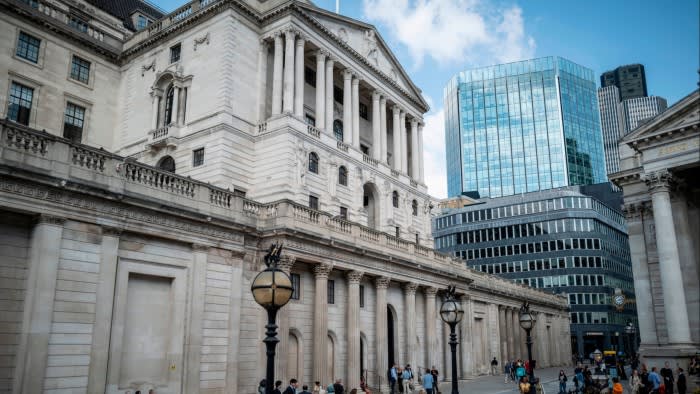Unlock the Editor’s Digest for free
Roula Khalaf, Editor of the FT, selects her favourite stories in this weekly newsletter.
The pound dropped more than 1 per cent against the dollar on Thursday, its biggest daily fall since March, after Bank of England governor Andrew Bailey opened the door to a faster pace of interest rate cuts.
The bank’s rate-setters could be “a bit more aggressive” on lowering borrowing costs if inflationary pressures continued to wane, Bailey told the Guardian newspaper.
Sterling fell to $1.3125 in early trading, extending its decline from last week when the currency traded above $1.34.
Following the publication of Bailey’s remarks, investors put the chance of the BoE delivering two quarter-point cuts this year at 75 per cent, up from 50 per cent.
The comments from Bailey challenged investors’ expectations that the BoE, faced with persistent price pressures in the key services sector, would cut rates far more slowly than the Federal Reserve and the European Central Bank.
“Given that inflation in the UK has been higher than in the US and Europe, the market has been pricing a shallower cycle,” said Athanasios Vamvakidis, global head of G10 FX strategy at BofA. “But these comments suggest that the BoE could go faster.”
UK inflation held steady at 2.2 per cent in August, but services inflation, the BoE’s key measure of domestic price pressures, rose to 5.6 per cent, up from 5.2 per cent in July.
However, Bailey told the Guardian he was encouraged by the fact that cost of living pressures had not been as persistent as the central bank thought they might be.
If the news on inflation continued to look encouraging there was a chance of the BoE becoming more “a bit more activist” in its approach to cutting interest rates, he said.
The BoE held interest rates at 5 per cent last month but signalled it may cut borrowing costs as soon as November. In August, the bank reduced rates from a 16-year high of 5.25 per cent, its first cut in more than four years.
Bailey’s remarks came as a survey from the BoE published on Thursday showed that UK businesses expect wage growth of 4.1 per cent in the coming year.
https://www.ft.com/content/4e877da2-d1c9-40f0-9c02-87f0f78c6d41


